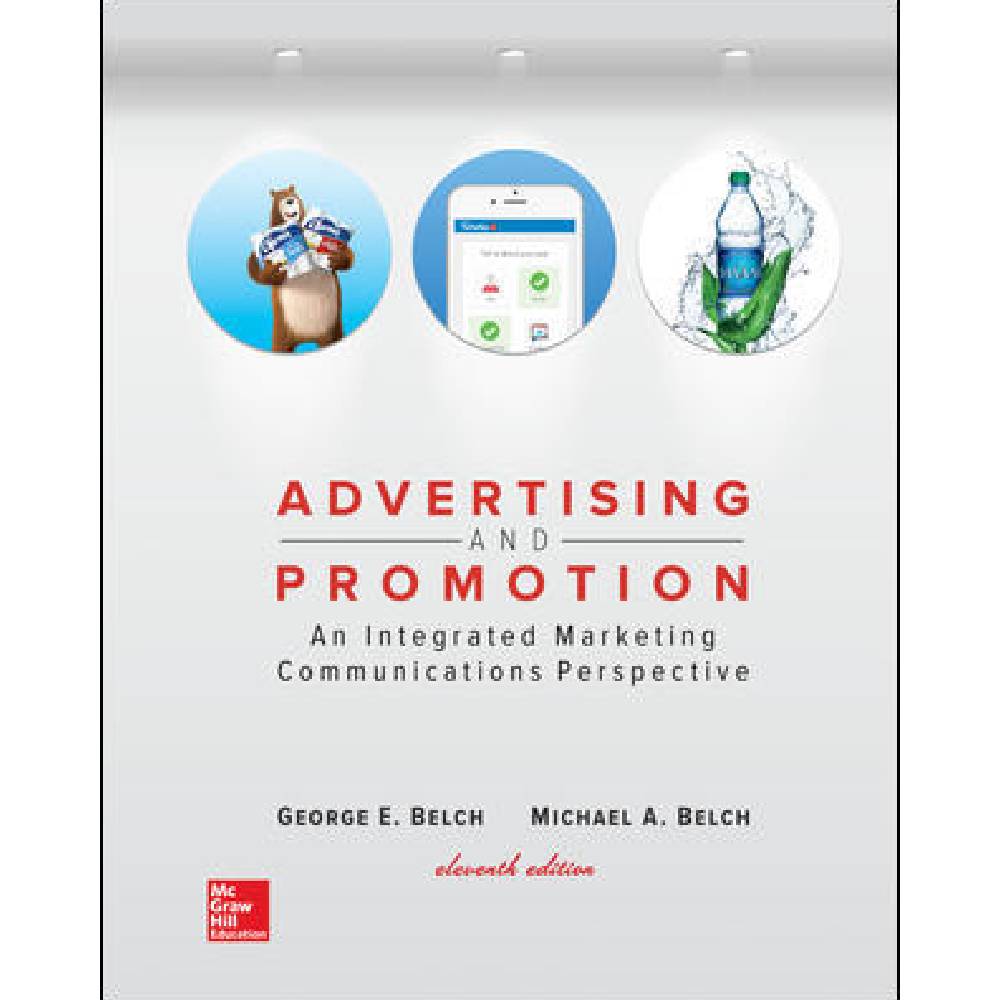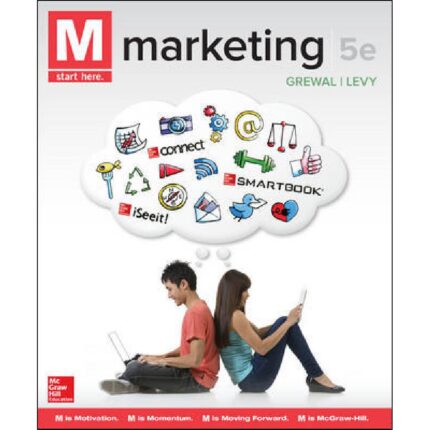Advertising And Promotion An Integrated Marketing Communications Perspective 11th Edition By George – Test Bank
Chapter 11 Test Bank Key
1. The interaction of sight and sound in TV commercials offers creative flexibility.
TRUE
The interaction of sight and sound offers tremendous creative flexibility and makes possible dramatic, lifelike representations of products and services. TV commercials can be used to convey a mood or image for a brand as well as to develop emotional or entertaining appeals that help make a dull product appear interesting.
AACSB: Analytical Thinking
Accessibility: Keyboard Navigation
Blooms: Remember
Difficulty: 1 Easy
Learning Objective: 11-01 Describe the role of television as an advertising medium and its advantages and limitations.
Topic: Advertising Media
2. Due to its ability to reach large audiences in a cost-efficient manner, TV is a popular medium among companies selling mass-consumption products.
TRUE
Because of its ability to reach large audiences in a cost-efficient manner, TV is a popular medium among companies selling mass-consumption products. Companies with widespread distribution as well as availability of their products and services use TV to reach the mass market and deliver their advertising messages at a very low cost per thousand.
AACSB: Analytical Thinking
Accessibility: Keyboard Navigation
Blooms: Remember
Difficulty: 1 Easy
Learning Objective: 11-01 Describe the role of television as an advertising medium and its advantages and limitations.
Topic: Advertising Media
3. Advertisers who are seeking a very specific, often small, target audience find the coverage of TV to be more cost effective as the coverage extends beyond their market.
FALSE
Advertisers who are seeking a very specific, often small, target audience find the coverage of TV often extends beyond their market, reducing its cost effectiveness. Geographic selectivity can be a problem for local advertisers such as retailers, since a station bases its rates on the total market area it reaches.
AACSB: Analytical Thinking
Accessibility: Keyboard Navigation
Blooms: Remember
Difficulty: 1 Easy
Learning Objective: 11-01 Describe the role of television as an advertising medium and its advantages and limitations.
Topic: Advertising Media
4. Increased penetration of DVRs has led to increased zapping of commercials.
FALSE
Zapping refers to changing channels to avoid commercials. Zipping occurs when viewers fast-forward through commercials as they play back a previously recorded program. With the increased penetration of DVRs, more people are watching recorded shows and fast-forwarding through the commercials.
AACSB: Analytical Thinking
Accessibility: Keyboard Navigation
Blooms: Understand
Difficulty: 1 Easy
Learning Objective: 11-01 Describe the role of television as an advertising medium and its advantages and limitations.
Topic: Advertising Media
5. When a network assembles a series of affiliated local TV stations, the networks share the advertising revenue they receive during these time periods with the affiliates.
TRUE
A network assembles a series of affiliated local TV stations, or affiliates, to which it supplies programming and services. The networks share the advertising revenue they receive during these time periods with the affiliates.
AACSB: Analytical Thinking
Accessibility: Keyboard Navigation
Blooms: Remember
Difficulty: 1 Easy
Learning Objective: 11-02 Discuss how television advertising time is purchased for network and local television as well as cable television.
Topic: Advertising Media
6. In network advertising, the advertiser has to deal with only one party or media representative to air a commercial nationwide.
TRUE
A major advantage of network advertising is the simplification of the purchase process. The advertiser has to deal with only one party or media representative to air a commercial nationwide.
AACSB: Analytical Thinking
Accessibility: Keyboard Navigation
Blooms: Remember
Difficulty: 1 Easy
Learning Objective: 11-02 Discuss how television advertising time is purchased for network and local television as well as cable television.
Topic: Advertising Media
7. Scatter market is a buying period that occurs before the TV season begins.
FALSE
Scatter market runs through the TV season. Up-front market is a buying period that occurs before the TV season begins.
AACSB: Analytical Thinking
Accessibility: Keyboard Navigation
Blooms: Remember
Difficulty: 1 Easy
Learning Objective: 11-02 Discuss how television advertising time is purchased for network and local television as well as cable television.
Topic: Advertising Media
8. Spot advertising is more easily acquired by national advertisers than local ones.
FALSE
A major problem for national advertisers is that spot advertising can be more difficult to acquire, since the time must be purchased from a number of local stations. Moreover, there are more variations in the pricing policies and discount structure of individual stations than of the networks.
AACSB: Analytical Thinking
Accessibility: Keyboard Navigation
Blooms: Remember
Difficulty: 1 Easy
Learning Objective: 11-02 Discuss how television advertising time is purchased for network and local television as well as cable television.
Topic: Advertising Media
9. The first-run syndication market does not include shows that did not make it as network shows.
FALSE
First-run syndication refers to shows produced specifically for the syndication market. The first-run syndication market is made up of a variety of shows, including some that did not make it as network shows.
AACSB: Analytical Thinking
Accessibility: Keyboard Navigation
Blooms: Remember
Difficulty: 1 Easy
Learning Objective: 11-02 Discuss how television advertising time is purchased for network and local television as well as cable television.
Topic: Advertising Media
10. Ratings points can be used by advertisers as measures for audience size and commercial rates.
TRUE
A ratings point represents 1 percent of all the television households in a particular area tuned to a specific program. Advertisers also follow ratings closely, since they are the key measure for audience size and commercial rates.
AACSB: Analytical Thinking
Accessibility: Keyboard Navigation
Blooms: Remember
Difficulty: 1 Easy
Learning Objective: 11-03 Discuss how television viewing audiences are measured and developments in audience measurement.
Topic: Advertising Media
11. Audience share is always higher than the program rating unless all the households have their sets turned on.
TRUE
Audience share is the percentage of households using TV in a specified time period that are tuned to a specific program. Audience share is always higher than the program rating unless all the households have their sets turned on (in which case they would be equal).
AACSB: Analytical Thinking
Accessibility: Keyboard Navigation
Blooms: Remember
Difficulty: 1 Easy
Learning Objective: 11-03 Discuss how television viewing audiences are measured and developments in audience measurement.
Topic: Advertising Media













Reviews
There are no reviews yet.